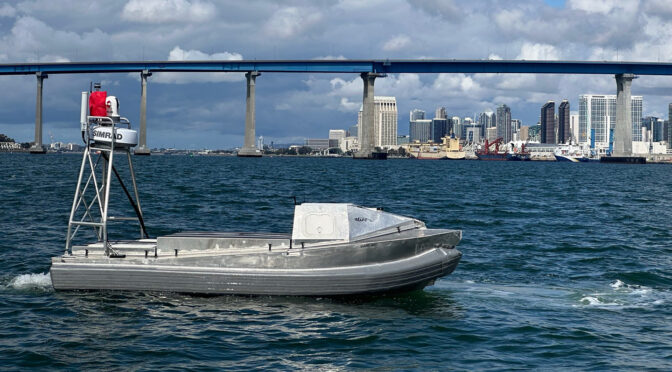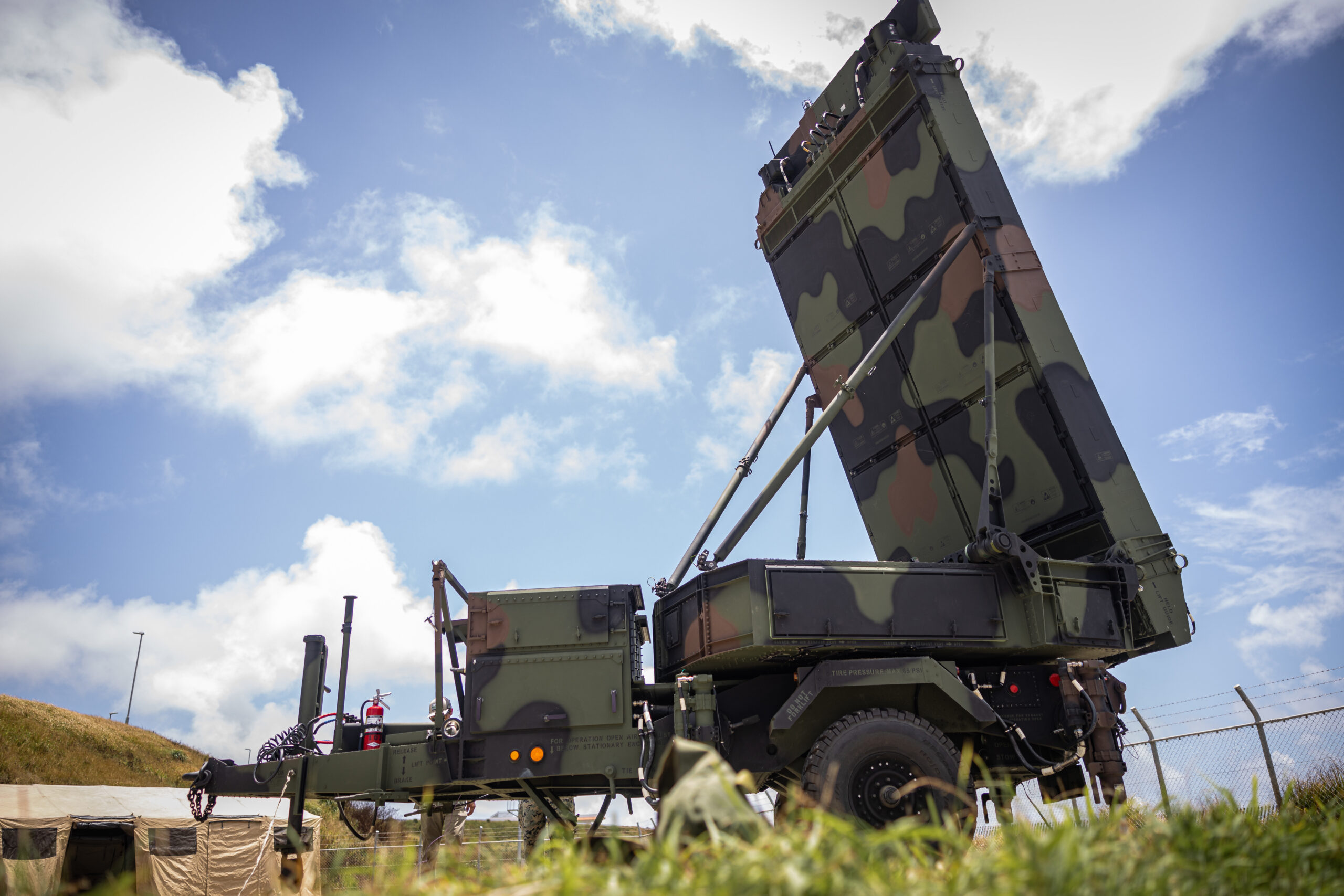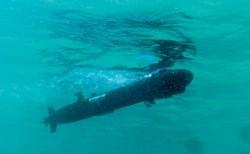By Scott Humr
Introduction
To understand the future, it is helpful to consider the past. Greek mythology can offer rich parallels to modern military technologies and concepts. Recent conceptions about the defense of Taiwan from a Chinese invasion through a “hellscape” of unmanned systems harkens to the mythical robot Talos to protect the island of Crete. Talos, a giant bronze robot, was commissioned by Zeus and built by the Greek god of invention and blacksmithing, Hephaestus. This lone Talos robot is said to have marched around Crete thrice daily and hurled boulders at invading enemy vessels.
While a single Talos was able to accomplish such mythical feats, the defense of Taiwan is envisioned to require “tens of thousands” of unmanned robotic systems. However, wishful thinking is not the bridge that will let us cross from myth to reality. Yet, “[w]ishful thinking” are the words of a retired Peoples Liberation Army Navy officer used to describe Admiral Paparo’s strategy for an “unmanned hellscape” if China were to conduct a cross straits invasion of Taiwan. While such an invasion of Taiwan and subsequent armed conflict would likely not benefit China, the fact remains that employing unmanned systems in the quantities envisioned by the United States would require its military to further develop both capacity and know-how to oversee such a complex endeavor.
If an unmanned hellscape is to move from fantasy to credible threat in the eyes of an adversary, the U.S. Navy, as part of the Joint Force, must take concrete steps to address weaknesses in its current conceptualizations of unmanned future warfare. To overcome these obstacles, the U.S. Navy can lead the way by appointing a robotics and autonomous systems czar to interface and invigorate industry, develop forward deployed naval robotics formations, and oversee a deeper investment in the forces needed to operate these systems.
Naval Robotics and Autonomous Systems Czar
The appointment of a naval robotics and autonomous systems czar or Razar [pronounced: “razor”] can provide the authority within a single individual to generate the momentum needed to overcome the challenges to making any vision of a credible robotics force a reality. However, reporting suggests that rising demand for weaponized drones could strain existing U.S. industrial base capacity. Specifically, when it comes to scale, history provides a poignant example of how a leader with a singular focus can move mountains.
With the commencement of hostilities near the end of the 1930s, U.S. leaders concluded that they needed to get the country on a wartime footing by scaling production quickly. The U.S. was able to bring about a massive change at a scale never before seen and not yet repeated up to this point. The appointment of William Knudsen as Chairman of the Office of Production Management with an eventual commission as a Lieutenant General in the U.S. Army helped rapidly expand the defense industrial base by fostering both innovation and production at scale. Along with others such as Henry Kaiser and “Cast-Iron Charlie” Sorensen, Knudsen helped organize and rally the American industrial base like no other in history to achieve unprecedented levels of production needed by the Allied powers, a 20th century Hephaestus. Knudsen’s efforts were only possible because of the authority vested in him by U.S. President Franklin D. Roosevelt and his own hard-won upbringing for understanding mass production like few others. Arguably, the U.S. Navy can do the same today.
While the U.S. Navy leads the Joint Force in operationalizing autonomous systems, it still needs a Razar to help lead and synchronize its efforts to ensure autonomous systems integrate with other platforms and capabilities. The Razar can lead the service’s efforts to help drive industry and cross-coordinate with the Joint Force for the development of common protocols and common control for autonomous systems technologies. Furthermore, the Razar can be the single office for Fleets and Type commands, who are responsible for readiness, training, and equipping of specific categories of naval capabilities, to interface with for the development of standards, open architecture approaches, testing, and assimilation of autonomous systems across the U.S. Navy. Without a Razar, the likelihood of a plethora of systems taking hold without a single integrator to help coordinate how these platforms will operate within current and projected naval concepts is bleak, particularly in the new age of “precise mass.”
A disjointed effort by the U.S. Navy will result in a greater number of incompatible systems, standards, and communications devices, which squanders precious time and limited resources. Rather, to succeed in this space, the U.S. Navy must appoint a Razar who is trilingual in technology, military operations, and acquisitions and has the authority, interpersonal skills, and enterprise knowledge to not only cut through bureaucratic red tape but is able to build bridges with industry. The Razar can also act as the lead sled dog of the Joint Force for helping implement Senator Roger Wicker’s Fostering Reform and Government Efficiency in Defense Act. To this end, the Razar’s efforts should become the Type command for future robotics formations.
Robotics Formations in the Fight
For the U.S. Navy to compete effectively with autonomous systems, robotics formations continuously operating forward should be its bid for success. The Ukrainian military has already demonstrated the utility of dedicated robotics force. While it can make sense to integrate some autonomous systems into existing formations, high-end capabilities will require additional technical acumen, safety considerations, and advanced tactics, techniques, and procedures developed by a dedicated core of personnel. A Razar can oversee the professional development of dedicated units that understand the complexity and nuance needed to employ autonomous systems effectively while ensuring seamless integration into other naval formations.
A dedicated robotics force will require a host of new qualifications, training standards, and readiness considerations. Large scale integration of such systems into current formations would add a tremendous amount of additional requirements on top of an already overburdened sailor’s list of current qualifications. Attempting to maintain additional qualifications for robotics or autonomous systems on top of existing requirements, will result in watered down proficiency, or worse, only a superficial understanding of autonomous systems capabilities. This projection is backed by a recent Government Accountability Office report which found “the Navy does not fill all required ship positions, and that sailors assigned to a ship are sometimes unavailable for duty (for example, temporarily assigned to another ship) or may have inadequate training or preparation for their positions.” Combined with already higher stress levels the force is experiencing, the U.S. Navy cannot afford to make its already overworked sailors do more.
Rather, cohesive units of robotics systems operators who can train and learn together are a superior proposition. When brought in early for planning naval operations, such personnel can provide unmatched expertise to support the operational commander and properly integrate into planning staffs. The Navy’s Robotics Warfare rating is a great start and their continued professionalization as a vital component to the naval service. It is also critical that robotics professionals are prepared to do without the contract support many units have become accustomed to expect in warfare.
Warfare, for the U.S., is an inherently governmental function. However, the wars in Iraq and Afghanistan demonstrated that a bevy of contracted support or field service representatives were necessary to employ a variety of technologies and provide in-country repair services. While the expansive forward operating bases of Iraq and Afghanistan provided a relatively safe area for contractors to operate, future battlefields in and around the First Island Chain will not provide the same level of sanctuary.
Placing robotics formations in the First Island Chain is also necessary for gathering the data necessary to train and improve machine learning algorithms for target recognition and autonomy before conflict erupts. This will allow robotics operators to improve their craft, especially in emissions control conditions where contacting distant support is not only unavailable, but dangerous. Operating forward in competition will allow robotics professionals to continuously perform operational test and evaluation, which is impractical if performed in its traditional manner. For these reasons, forward deploying dedicated robotics formations becomes an imperative to demonstrating a credible robotics force against Chinese aggression, improving autonomous systems tradecraft, while also demonstrating a strong commitment to our allies and partners.
Invest in Humans
The Razar can also act as the lead advocate for the development of robotics personnel, which are anticipated to increase. There are already reports from the war in Ukraine that make clear the necessity and importance of fielding large numbers of drone operators. These operators also provide critical oversight and expertise for employing autonomous systems capabilities to ensure both their legitimate, ethical, and effective use. Naval robotics personnel would provide the necessary legal and ethical oversight of autonomous weapon systems and assurances for helping overcome their complex employment. Because war is fundamentally a human endeavor, having human oversight over autonomous systems are key to demonstrating U.S. commitment to International Humanitarian Law and applying appropriate levels of human judgment required in Department of Defense Directive 3000.09. However, the Navy’s lowering of recruitment standards coupled with an already difficult recruiting environment may prove detrimental for inculcating the technically proficient human capital necessary to sustain such an envisioned robotics force that hellscape requires.
Key for adherence to these and other ethical principles is not only having educated, and well-trained personnel at all levels of command who understand the implications of employing autonomous systems, but professionalized units who specialize in autonomous systems. A key pillar of the Navy’s unmanned campaign framework is the investment in warfighter education. To accomplish this with personnel responsible for leading autonomous systems implementation, the U.S. Navy needs to expand its education at Carnegie Mellon University and the Naval Postgraduate School while furthering opportunities to include other schools for incorporating additional courses on the ethical employment of autonomous systems. Incorporation of more human factors and human-machine interaction training including the use of a detailed case study method will go a long way in developing greater understanding needed for autonomous systems operators and leaders alike. Accordingly, the realization of human-machine teaming with autonomous systems will only come about through a comprehensive appreciation in the development of the human side of the autonomous systems equation. To be sure, complexity does not stop there either.
Robotics and autonomous systems also operate within a system of other complex systems. When such systems are linked together in various kill webs or chains of diverse technologies, complexity increases nonlinearly. The combination and integration of different waveforms, assorted protocols, numerous encryption schemes, and variability of track formats makes complexity rise where mistakes can eventually compound. Robotics operators and their leaders need to become familiar with the myriad challenges associated with technologies within which autonomous systems are integrated. Having highly trained individuals will support easier integration of newer autonomous systems and associated technologies into operational plans. Fittingly, well-trained robotics personnel generate greater rapport for their organizations by establishing trust and confidence to commands and allies they support.
Hellscape’s Holdups?
The appointment of a Razar to oversee all robotics and autonomous systems also has drawbacks. It will centralize a number of aspects that may slow some units down for adopting and integrating autonomous systems in the short term. Moreover, an argument could be made that the U.S. Navy should let a thousand flowers bloom for robotics technologies and promote decentralized innovation. While the appointment of a Razar should not inherently slow down the development of robotics systems and their adoption by other units, a bias toward incorporation at the highest levels is still necessary. Instead, a Razar can take many of the best-of-breed innovations and systems to ensure they support naval forces in a unified way. The Razar can act as the key linkage to other Type or functional commanders in a way lower-level units may struggle to see adopted at scale. Moreover, the Razar is needed to advocate for the significant number of doctrine, organization, training, materiel, leadership and education, personnel, facilities, and policy considerations to account for future programming of resources to ensure autonomous systems do not become an ephemeral capability.
Another potential drawback is not integrating them at scale within a carrier or expeditionary strike group (C/ESG). While this may be true at a certain level, it cannot be looked at as a shortcoming. Rather, through the use of liaison officers, pre-deployment workup opportunities, and envisioning such units as lethal eyes and ears of the C/ESG, forward deployed autonomous systems placement more than makes up for any apparent non-assimilation. Additionally, paired with forward deployed Marine Corps Stand-In Forces provides a more robust landward component of the Navy that will help keep the door open for the Joint Force, to include allies and partners. Predictably, the Joint Force could one day see the addition of a Combined Force Robotics Component Commander as part of a Joint Task Force in the very near future.
Conclusion
The U.S. Navy, and the Joint Force, in general, face an impending crisis for supporting the defense of Taiwan against any number of potential Chinese actions to bring Taiwan under its control. However, the ability to create a hellscape will require a U.S. Navy intimately familiar with the capabilities and limitations of numerous robotics systems. Furthermore, burdening current units with large quantities of autonomous systems is equally unlikely to result in increased lethality and effective integration but instead weaken current capabilities due to the additional training placed on already overtasked personnel. Such an approach is a recipe for disaster and disuse of robotic systems. Instead, the future is professionalized naval units specializing in human-machine integration with the ability to seamlessly incorporate them into any number of naval formations. This will, however, require the U.S. Navy to have standing forces of these teams if it is to truly benefit from these advanced systems.
Unlike Talos, today’s robotic systems require significant human oversight and additional capabilities to orchestrate a credible capability. Yet, in similar fashion to Talos, robotic systems today can suffer from a number of singular flaws. The Razar should oversee mitigations through continuous development, training, and employment that will address these shortcomings. The ichor that powered Talos in Greek mythology is analogous to the data and connectivity necessary to operate a vast network of robotics and autonomous systems to create a hellscape. A ‘Hell-Razar,’ therefore, must address these potential points of failure.
The myth of Talos provides interesting parallels to the protection of an island by a robotic force. To address this future state, the U.S. Navy can lead the way by assigning a Razar to both coordinate better integration while bolstering defense business, develop forward deployed autonomous systems formations, while also expanding and investing heavily in its robotics personnel. This is what is needed to get “more players on the field” quickly to make our adversary’s think twice while also demonstrating a credible and employable capability to the Joint Force, allies, and partners.
Scott Humr, PhD, is an active duty lieutenant colonel in the United States Marine Corps. He currently serves as the deputy director for the Intelligent Robotics and Autonomous Systems office under the Capabilities Development Directorate in Quantico, Virginia.
The views expressed are those of the author and do not reflect the official position of the United States Marine Corps or the Department of Defense.
Featured Image: A Global Autonomous Reconnaissance Craft (GARC) at a Technology Readiness Experimentation event in San Diego in March. (Photo by Johns Hopkins APL/Steve Yeager)









